BIGGARSBERG
THATCHERS
Make the right choice, the first time!
“BEST THATCHED ROOF
IN THE WORLD”
AWARD WINNERS
2014 & 2019
about us
Biggarsberg Thatchers has grown from strength to strength since its launch back in 1993 to become one of the leading thatching companies in South Africa.
This is due to our attention to detail, our high standard of workmanship, the harvesting of the highest quality thatch grass, the use of the best quality poles, and very importantly, our constant site supervision.
Biggarsberg Thatchers was the first thatching company in the country to be certified by SATAS (South African Technical Auditing Services) for compliance to the national standards.
We pride ourselves on doing exceptional work.
Today, Biggarsberg Thatchers employs over 70 labourers, consisting of highly in-house trained quality thatchers and pole carpenters.
We do our own annual harvesting of grass during which time we employ up to an additional 900 thatch cutting ladies from the Tugela Valley area.
This guarantees us that we have an ample supply of stringently quality controlled thatch grass of the highest quality readily available to ensure that we are able to honour and complete any large contracts.
" Our unique ability to visualise your dream, and apply our expertise to every detail, ensures that Biggarsberg Thatchers remain one of the country’s leading thatching companies. "
t/a BIGGARSBERG THATCHERS
INDUSTRY
SPECIALISTS
John is passionate not only about the thatching that Biggarsberg Thatchers is involved with, but also in the thatching industry as a whole and is a past National Chairperson of the Thatcher’s Association of South Africa (TASA).
He also compiled and wrote a thatch training manual which he has made available to all members of the Thatchers Association of South Africa and was the integral force behind the creation of “The Guide to Thatching in South Africa” which was published in 2016.
John is a committee member on the SABS standards team regarding all matters related to the thatching industry and is thus always up to date and informed of the latest requirements and regulations of the board.
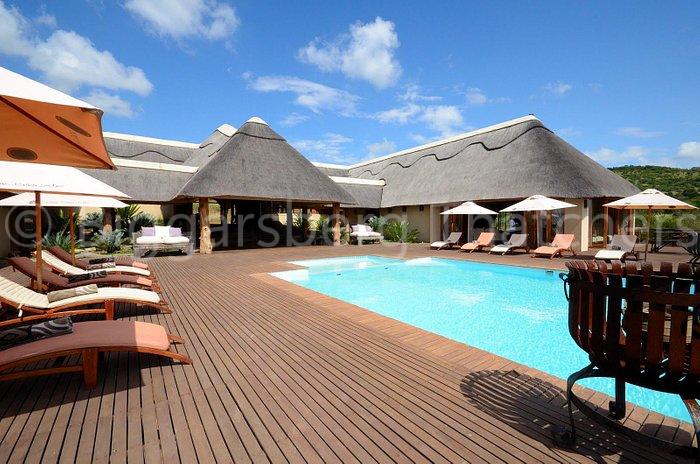
THE TEAM
John has had a firm hand in the thatching industry since the mid-eighties, by supplying the industry with thatch grass harvested from his family farm in the Biggarsberg, Northern KZN. A decade later, he started his own thatching business.
John studied agriculture at the Weston Agricultural College where his interest in woodworking and construction saw him receiving the Woodworking award in his Matric year.
He went on to work in the Agricultural Industry for many years and spent approximately 20 years of his career as the manager of a piggery in the Kamberg area.
Upon closure of the piggery, John took his love and intrigue of thatched roofs, which he had had since his youth, together with his instinctive knowledge and ‘feel’ for building and distinct flair for thatch roof design and started Biggarsberg Thatchers.
Wife and partner in the company, June has been involved in the harvesting process since 1988 and has been an integral part of the business since its inception as Biggarsberg Thatchers in 1996.
June ensures that the quality of all grass harvested off their farm, neighbouring farms and various areas within a 100km radius is kept to the highest standard.
Apart from being involved in the thatching business June runs an incredibly stunning self-catering cottage on their farm called “Thatcher’s Rest Self-Catering Cottage“
She has also organized numerous shows and dances in the past which were held at ‘Thatcher’s Barn Theatre’ (a converted shed on the farm) and successfully raised large amounts of funds for various charities.
Shaun, son and partner in the company, manages their Hillcrest Branch. Shaun along with his wife and young family moved from the farm to Hillcrest specifically to run and oversee the Phezulu Game Estate project.
With the name and good reputation of Biggarsberg Thatchers becoming known throughout KZN, Shaun has found himself travelling far and wide running the sites in areas in the Midlands and northern and southern coastal regions including Kokstad and surrounding areas.
Shaun spent many weeks in Portugal, again travelling from North to South, thatching lapas and entertainment areas. He is responsible for the pole construction design of all the roofs constructed by Biggarsberg Thatchers.
Shaun is also responsible for the site management of all his projects.
This is our team of Tying Ladies’ who process the large bundles of grass which are harvested throughout KZN and the Freestate by women from the Tugela Valley area during the winter harvesting season.
Throughout the year, the ladies process the grass which is brought in from the fields, and check the quality by separating the grass and removing any sub-grade blades. They then chop the ends off of each and every bundle to ensure that a clean cut remains for the perfect finish on the roofs.
The smaller bundles, are then re-bound into larger bundles which are then stored in enclosed sheds throughout year until required on a site
Theses perfectly cleaned and bound bundles are those used on the roofs by our teams of qualified and expert thatchers.
John is proud to say that the profession of good thatching is not something that comes from formal education, but from passion and years of dedication and experience.
OUR GREATEST PROJECTS
Our trademark is your guarantee of our professionalism, quality & craftsmanship.
Biggarsberg Thatchers have carried out numerous contracts throughout the country and have even travelled as far as Portugal.
Didima Hutted Camp in the Drakensberg, Ncome Museum at Blood River, Lions Valley Lodge in Nambiti Private Game Reserve, Lalanati Guest House in Harrismith, Thandana Wedding Venue in Ladysmith, Phezulu Game Estate in Botha’s Hill and Eagle Rock Estate in Gillitts, are just some of our very many projects.
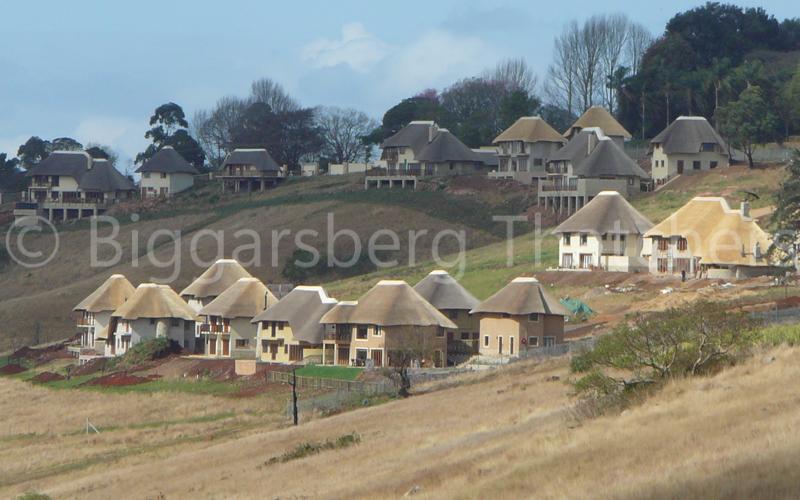
EAGLE ROCK
ESTATE
Eagle Rock Estate is an ‘eco-estate’ situated in the St. Helier area of KZN and consists of approximately 30 sites, all with thatch roof homes, the majority of which, have been thatched by Biggarsberg Thatchers.
Eagle Rock Estate, stands as testament, once again to Biggarsberg Thatchers’ ability to bring about the visions of the architects and the dreams and desires of the homeowners.
Biggarsberg Thatchers have interpreted the architect’s designs, along with ideas and input from the homeowners to create the perfect ‘bush lodge’ ambience and appeal which fits in perfectly with the surrounding conservancy area of Giba Gorge Environmental Precinct.
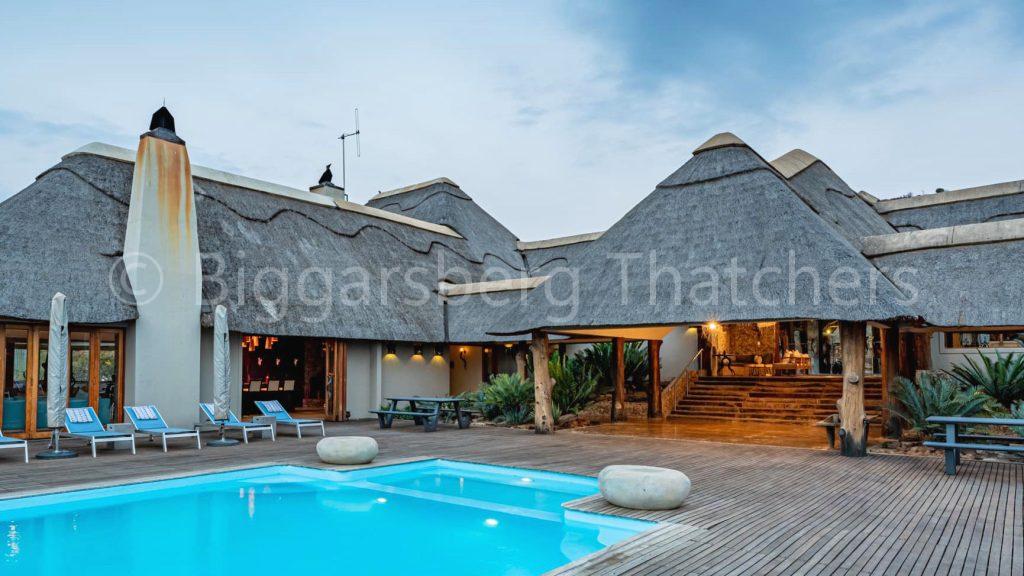
LIONS VALLEY
LODGE
Lions Valley Lodge was a particularly challenging location, as the roads were still under construction and therefore extremely rough and rocky.
As a result, John took along his tractor to access the site and had to purchase a crane to get the 129 bulky bush tree columns to the site.
Interesting challenges didn’t stop there, when a passing hailstorm was relentless enough to virtually write off one of his site vehicles and a family of lions took refuge in the building for the night and posed a problem to workers the following morning.
To add to this, a heard of buffalo charged right through one of the buildings and laid waste to all the doors. The project has become a benchmark for the quality of work for which Biggarsberg Thatchers is known.
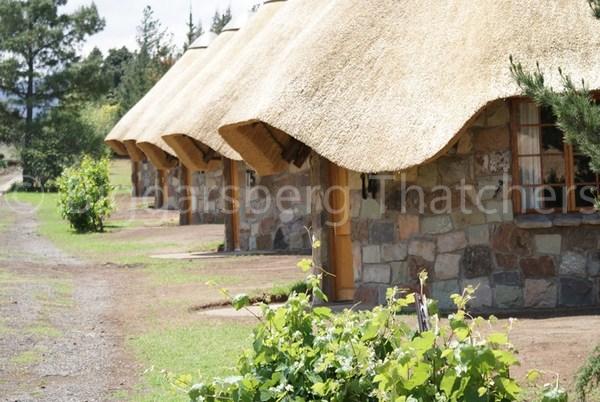
LA LA NATHI
GUEST HOUSE
A long and mutually respectful relationship has existed between Biggarsberg Thatchers and the owners of La La Nathi Guest House.
It all started in March 2000, when June catered for the wedding of the client’s daughter. June casually mentioned that should they ever need maintenance done on their thatch roof, or consider any new additions, Biggarsberg Thatchers would be happy to submit a quotation.
A few months later, the interested, but still rather reserved client called John to enquire about thatch chalets which he was planning on building.
John suggested that they spend the day together visiting various sites which had been completed. Well, that was that! Chalets, a conference centre, bar, dining area, wedding venue, rondavels, a health spa and, most recently completed, the ever so beautiful chapel.
All stand testament to the utter satisfaction of yet another very happy client.
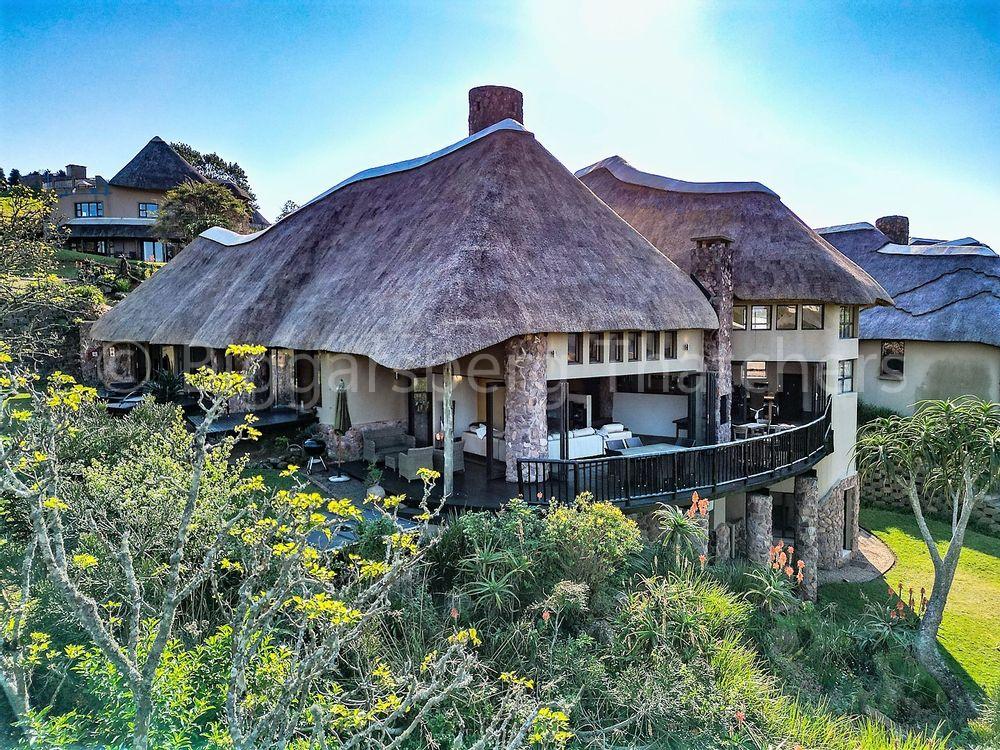
PHEZULU PRIVATE
GAME ESTATE
The roofs at Phezulu Game Estate have all been specifically, architecturally designed to follow and flow with the natural beauty of the surrounding hills.
Biggarsberg Thatchers were chosen as the preferred thatching company and have to date thatched approximately 40 beautiful family homes, with many more still to be built.
Biggarsberg Thatchers have used their distinct ability, creativity, excellent workmanship and materials of the highest quality, to interpret, meet and create the visions of the architects and the dreams of the homeowners.
OUR
PORTFOLIO OF PRODUCTS
We stand firmly behind every blade of our high-quality grass.
ROOFS
FENCING
CONSTRUCTION
TO TILES
SCREENS
CONSTRUCTION
DECKING
ROOFS
FRAME
HOUSES
we also offer the following SERVICES
- Free quotations.
- Thatch roof design advice and consultation.
-
Personal on-site supervision during timber roof construction
(this forms the backbone to our beautiful thatch roof finish). - General thatching consultation.
- Project Manager/Contractor liaison.
- Maintenance and repair service.
- Material supply and sourcing.
- Cost effective thatch roof insurance.
- Advice/consultation to insurance loss adjusters.
- All materials are in accordance with or exceed the SABS specifications.
- All materials and workmanship carry a 2-year guarantee period.
BEST THATCHED ROOF IN THE WORLD
ITS CONFERENCE
JAPAN
2019
BEST THATCHED ROOF IN THE WORLD
ITS CONFERENCE
CAPE TOWN
2014
MOST AESTHETIC STRUCTURE
TASA
National Design Awards
Johannesburg
2010
BEST STRUCTURE
TASA
National Design Awards
Johannesburg
2009
MOST AESTHETIC STRUCTURE
TASA
National Design Awards
Johannesburg
2009
MOST AESTHETIC STRUCTURE
TASA
National Design Awards
Johannesburg
2008
OUR
AWARDS
A testament of our exceptional service and quality, and our passionate, tailor-made approach to thatching.
our clients
Don't just take our word for it!
GAME LODGE
AIRPORT
NURSERY
GAME FARM
DANHOUSER
HUTTED CAMP
ROACK ESTATE
LODGE
GOOSE
HOTEL & SAFARI
LODGE
PUMP STATION
PALACE
CHAPEL
GUEST HOUSE
LODGE
SENEKAL
RESTAURANT
LODGE
LODGE
LODGE
HILLS
MUSEUM
GAME ESTATE
GAME LODGE
GAME LODGE
WEDDING VENUE
GUEST HOUSE
REST
GAME LODGE
GUEST HOUSE
PLOUGH PUB
They are a dependable company and we have no reservations in recommending them."
EZEMVELO KZN WILDLIFE
The management of Umngazi is extremely grateful of the professional relationship it has with Biggarsberg Thatchers and highly recommends their expertise."
UMNGAZI HOTEL & SPA
Make the right choice, the first time!
contact us
HEAD
OFFICE
034 651 1664
thatchers@thatcher.co.za
JOHN
SMITH
HEAD OFFICE
083 270 3826
john@thatcher.co.za
SHAUN
SMITH
HILLCREST
083 635 8746
shaun@thatcher.co.za
FAQ's
- HOW LONG WILL A NEWLY THATCHED ROOF LAST?
This depends upon many factors, eg:
– The pitch of the roof should be no less than 45 degrees.
– The humidity in the area.
– It depends on the original quality of the materials and workmanship.
– Shadowing from large overhanging trees.
– Proper maintenance by qualified persons.
– Combing by unqualified persons can drastically reduce the lifespan of a roof.
If all of the conditions are ideal the average lifespan of a thatched roof would be between 20-25 years.
- WHAT FIRE PREVENTION METHODS ARE THERE FOR THATCHED ROOFS?
– Drenching systems.
– Fire blankets.
– Smoke detectors.
- CAN A NORMAL TILED ROOF BE REPLACED WITH A THATCH ROOF?
Yes. A normal tiled roof can be replaced by a thatch roof.
Certain and definite requirements and changes to the roof structure would be
necessary and would have to be discussed with Biggarsberg Thatchers.
- ARE THE INSURANCE COSTS OF HAVING A THATCHED ROOF MUCH HIGHER THAN A REGULAR TILED ROOF?
The cost of insurance is higher on a thatched roof but not by an exorbitant amount.
Insurance companies will take into account the number and type of preventative
measures which have been put in place.
Eg:
– Concrete ceilings over kitchens.
– Drencher systems installed.
– Fire blankets installed.
– Early warning systems. eg: smoke detectors.
– Hose reels/fire extinguishers installed in strategic areas around the building.
– Proximity to the closest fire station.
- WHAT ARE THE BENEFITS OF A THATCHED ROOF?
– Aesthetically appealing.
– Natural insulation and therefore saving on electricity bill for both heating and cooling.
– Sustainable materials.
TECHNICAL
Our standard practice for thatched roofs.
GUMPOLES - TIMBER STRUCTURE
Gum poles will be used from trees of the Genus Eucalyptus grown in South Africa and treated with a preservative solution of copper-chromium-arsenate (CCA) compounds which complies with SABS 457 and applied in accordance with the SABS to Hazard Class H4.
All gum pole structures to buildings 6m and wider will be subject to engineer’s approval. This will form part of the fee paid by client to the Engineer.
All free-standing structures i.e. Lappas will require Engineers approval and certificates.
The diameters specified shall be the size measured at the thin end of the gum pole.
Pole ends will be nailed with anti-split plates.
ROOF PITCH
A minimum pitch of 45° (but preferably 50°) will be maintained throughout. However, on rare occasions 40° will be allowed over dormer windows only.
CONNECTION POINTS
16mm galvanized thread bar will be used for all major connections.
12mm galvanized thread bar will be used for all rafter connections.
All joints will be drilled and fixed with galvanized threaded bar and no nails will be used for this purpose.
Cross-tonguing joints shall be used on all gum poles which are unobtainable in the lengths required.
UPRIGHTS - SIZE OF POLES FOR FREE STANDING STRUCTURES
Buildings up to 5.0 meters wide will have 175/200 diameter posts fixed with 16mm thread bar.
Buildings between 5.1 and 6.0 meters wide will have 200/225 diameter posts fixed with 16mm thread bar.
Buildings between 6.1 and 10.0 meters wide will have 225/250 diameter posts fixed with 16mm thread bar.
Buildings over 10.1 meters wide will have 250/275 diameter posts fixed with 20mm thread bar.
All uprights will be spaced at no more than 3.5 meters apart unless a lattice beam system is used (Subject to engineers’ detail).
RING BEAMS - SIZE OF POLES FOR FREE STANDING STRUCTURES
Buildings up to 6.0 meters wide will have a 150/175 diameter ring beam.
Buildings between 6.1 and 9.0 meters wide will have a 175/200 diameter ring beam.
Buildings over 9.1 meters wide will have a 200/225 diameter ring beam.
RAFTERS - SIZE OF POLES FOR ALL STRUCTURES
A double ridge pole system will be used.
All buildings up to and including 8m will have 100/125 diameter rafters, spaced at 900 centers or less.
Buildings 8.1 to 12.0 wide will have 125/150 diameter rafters, spaced at 900 centers or less.
All rafters will be secured to walls using a double strand of 4mm wire.
No hoop irons will be used.
TIE BEAMS - SIZE OF POLES FOR ALL STRUCTURES
Tie beams will be spaced at no more than 2.7 meters apart.
Tie beams will be used for buildings 10 meters wide or less.
Queen posts will be added to King posts for buildings 10.1 meters and wider in addition to tie beams.
LATHS - SIZE OF POLES FOR ALL STRUCTURES
The thickness of all laths at their thin ends will range between 25mm and 38mm and will be nailed to rafters at minimium 250mm and maximum 270mm centres using 4” nails.
Only the first row at the eaves and the last row at the ridge will be at ±150mm centres.
THATCHING
Only guaranteed frost cured, fully grown thatch grass of the Hyperrhenia Hirta species which has been cleared of all leaf and sheath residue and which is free of mould will be used.
The thatching grass will be beige/yellow in colour and shall have a maximum body moisture of 10% to 15% by mass.
Only straight pieces that have been cut above the first notch will be used.
The grass will be 800mm to 1500mm in length, with the ends ranging from 2mm to 3.5mm diameter.
We will ensure that all seed ends of back thatch (sprei laag) are covered thus ensuring the uniformity of the colour.
All grass stems will be concealed by laths.
We take special care in storing and stacking thatch grass on site, by placing the bundles off the ground and under cover.
Roofs will be thatched to a thickness of between 175mm and 200mm which is measured at right angles to the roof.
All roof valleys will be fitted with galvanized valley liners, or aluminium in coastal areas.
Stitching will be done using a double strand of sisal tar twine with a maximum stitch width of 110mm.
RIDGE CAPPING
Thatch at the roof apex will be bent over the ridge of the roof and fixed to the opposite side of the existing gum pole laths.
A cement mixture of 4:1 i.e. 2 wheelbarrows to 50kg bag will be used.
250 Micron plastic will be used as an underlay to the concrete and cut to cover the last stitch of twine only. A minimum space of 100mm will be created at the end of the capping to ensure that the cement mix binds with the underlying thatch.
25mm x 0.9mm netting wire to extend over entire width of capping.
50mm thick cement capping to extend over the last layer of thatch ensuring that the butt ends are secured by the capping (this ensures that birds are unable to pull the thatch from under the ridge). Capping to be floated to a smooth even finish.
Expansion joints at no more than 3 meters apart.
SERVICING
One needs to understand the technical detail of a thatch roof before you merely let a unqualified Thatcher comb a roof. Every combing process unless properly done, reduces the cover over the sway in other words the functional thickness of a roof and thus lifespan. For functional thickness (see photo 1 below).
The correct procedure is to inspect the general length of the thatch or reed. If found long enough, the next step is to pull down the thatch layers (see photo 2 below).
The binding twine then needs to be tightened on the underside of the roof (see photo 2). Only then can the combing process begin.
It is advisable that this process is well supervised as a uninformed and inexperienced Thatcher will take the shortcut and ultimately destroy the roof.
GUARANTEE
Twenty-four (24) months guarantee on defective workmanship and materials.